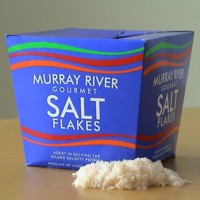Scientific American

Mickey Parrish, head of the Department of Nutrition and Food Sciences at the University of Maryland, explains:
Salt (usually sodium chloride) and sugar (usually sucrose) hinder bacteria from developing and causing the food to rot in several ways. The main way is simple osmosis which causes dehydration. The salt or sugar, as a solid or in solution, tries to reach an equilibrium with the salt or sugar content of the food product with which they are in contact.
This action takes out available water from the food and brings salt ions or sugar molecules inside. This leads to a decrease in the index called "water activity" (aw), an index indicating the proportion of unbound, or free, water molecules in food. These molecules are essential for the survival of the bacteria and their reproduction. In most fresh foods, the aw value is 0.99, while the threshold value required to stop the development of most bacteria is approximately 0.91. Yeast and mold often survive even in even smaller amounts of water.
There are considerable differences in the ability of different microorganisms to withstand the reduction of water content that comes from sugar or salt. Most disease-causing bacteria do not multiply in aw values lower than 0.94 (concentration of about 10% sodium chloride), and in contrast, most types of mold that spoil food grow even in low aw values that reach up to 0.8, conditions that correspond to highly concentrated solutions of sugar or salt .
Apart from drying the food from water, salt and sugar interfere with the enzymatic activity of the bacteria and weaken the molecular structure of their DNA. Sugar also preserves food indirectly by accelerating the accumulation of antibacterial compounds, which originate from the proliferation of other organisms. Examples of this: fermentation of yeast in wine that converts sugar to ethanol, and conversion of sugar to organic acids in sauerkraut by lactic acid bacteria.
The practice of adding salt, sugar or both to food has ancient roots and many names. For example, the origin of the name of the meat preserved in salt known as corned beef is from the English word corns which indicates pieces of salt rocks.
The preservation can be done using solid salt or sugar crystals, or using aqueous solutions of sugar or salt. For example, salt water is a solution used to preserve vegetables to make "pickles". Examples of foods preserved with sugar or salt are pickled meat, candied fruits and jams. The preservation is done in various ways that sometimes also include additional methods such as smoking or additional components such as spices. These processes not only prevent the food from spoiling, but also delay or prevent the development of disease agents in the food, such as salmonella parasites or the bacterium Clostridium botulinum.
